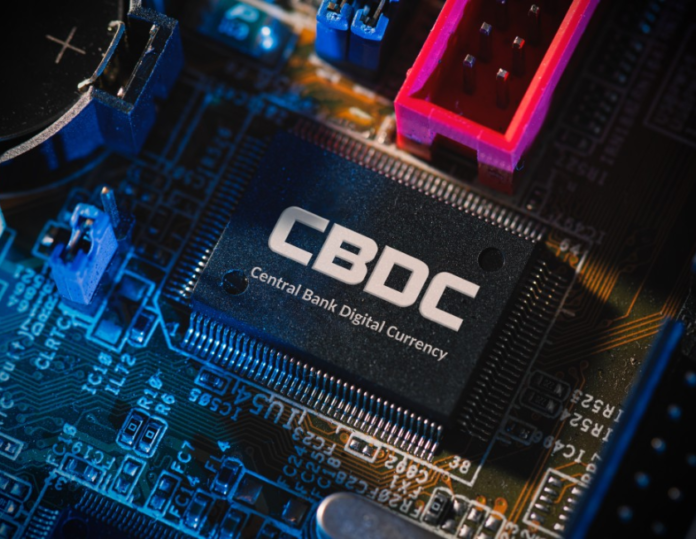In today’s rapidly evolving financial landscape, Central Bank Digital Currency (CBDC) has come out as a groundbreaking innovation poised to redefine the future of money.
CBDCs are digital representations of a country’s fiat currency that are issued and controlled by the central bank, as opposed to decentralised cryptocurrencies like Ethereum and Bitcoin.
They combine the convenience and speed of digital transactions with the reliability and stability of traditional fiat money.
As countries worldwide explore CBDCs’ potential, these digital currencies promise to enhance financial inclusion, reduce transaction costs, and improve the effectiveness of monetary policy.
However, their implementation comes with challenges, including privacy concerns, cybersecurity risks, and regulatory hurdles.
Understanding Digital Currencies
Digital currencies are electronic forms of money that exist solely in digital form, facilitating seamless and rapid transactions across the globe. They include a range of types, from decentralized cryptocurrencies like Bitcoin and Ethereum, which use blockchain technology without central control, to Central Bank Digital Currencies (CBDCs) issued and regulated by national central banks.
Digital currencies offer benefits such as enhanced financial inclusion, reduced transaction costs, and improved efficiency in payments. However, they also present challenges, including cybersecurity risks and regulatory concerns, necessitating robust frameworks to ensure their safe and effective use.
What is Central Bank Digital Currency
A central bank digital currency (CBDC) is a digital form of a nation’s fiat currency issued and regulated by its central bank.
They exist exclusively in digital form, facilitating secure, fast, and efficient transactions. CBDCs aim to enhance the financial system by providing easy access to financial services, reducing transaction costs, and enabling more effective monetary policy implementation.
They also promise to improve payment system efficiency and combat illegal financial activities through enhanced traceability and transparency. However, the introduction of CBDCs presents challenges, including privacy concerns, cybersecurity threats, and potential disruptions to traditional banking systems.
As countries examine and pilot CBDCs, their development represents a significant step towards the future of digital finance, promising to reshape the global economic landscape.
Also Read: Pioneering the Future of Advanced Technology
Advantages of Central Bank Digital Currency (CBDC)
Central Bank Digital Currencies (CBDCs) offer several advantages that could revolutionize the financial system. Here are some key benefits:
Financial Inclusion
Financial inclusion refers to the process of assuring that all individuals and businesses, particularly those in underserved or remote areas, have access to valuable and affordable financial products and services. These services include banking, credit, insurance, and digital payment options.
By integrating more people into the financial system, financial inclusion aims to reduce poverty, foster economic growth, and create equal opportunities for economic participation. This access empowers individuals to save, invest, and protect themselves against economic vulnerabilities, ultimately contributing to a more inclusive and resilient economy.
Reduced Transaction Costs
Reduced transaction costs refer to the lower expenses associated with conducting financial transactions, achieved by eliminating intermediaries and utilizing efficient technologies.
Central Bank Digital Currencies (CBDCs) can significantly cut these costs by streamlining payment processes and speeding up transactions, particularly for cross-border payments, which are traditionally slow and costly.
This efficiency benefits consumers and businesses by making financial services more affordable and accessible, promoting economic activity, and fostering a more efficient financial system.
Enhanced Monetary Policy
Enhanced monetary policy with Central Bank Digital Currencies (CBDCs) allows central banks to directly influence the money supply and implement interest rate changes more effectively. CBDCs enable precise, real-time monetary interventions, such as direct stimulus payments to citizens.
This improves the central bank’s ability to manage economic stability, control inflation, and respond to financial crises. The transparency and traceability of CBDC transactions provide valuable data for better-informed policy decisions, enhancing overall economic management and fostering a more resilient financial system.
Improved Payment Systems
They facilitate seamless domestic and cross-border payments, reducing reliance on traditional intermediaries. This modernization promotes financial inclusion by making payments accessible to all, including unbanked populations.
Increased Transparency
It also enables more accurate data analysis, empowering policymakers to make informed decisions for economic stability and growth. Overall, increased transparency enhances the integrity and efficiency of financial transactions, benefiting individuals, businesses, and governments alike.
Security
Security with Central Bank Digital Currencies (CBDCs) is ensured through advanced encryption and blockchain technology, safeguarding transactions from unauthorized access or manipulation. Blockchain’s decentralized nature makes it resistant to cyberattacks and fraud, enhancing the overall security of the financial system.
Central Bank Digital Currencies Around the World
Here’s a glimpse into CBDC developments across the globe:
- China: China is at the forefront of CBDC development with its Digital Currency Electronic Payment (DCEP) project. The People’s Bank of China (PBOC) has conducted extensive pilot programs across various cities, aiming to replace a portion of physical cash with the digital yuan.
- Sweden: Sweden’s Riksbank is exploring the concept of the e-Krona, a potential CBDC, as the use of cash declines in the country. Pilot programs are ongoing to test its feasibility and functionality.
- The Bahamas: The Bahamas became one of the first countries to launch a CBDC with the Sand Dollar officially. This digital currency aims to enhance financial inclusion and improve the efficiency of the payment system in the archipelago.
- European Union: The European Central Bank (ECB) is actively researching the possibility of a digital euro. Public consultations and studies are underway to assess its potential impact on the financial system and economy.
- United States: The Federal Reserve is studying the implications of a digital dollar. While no official CBDC has been announced, the Fed is engaging with stakeholders to explore the potential benefits and challenges.
FAQ
What are the two types of central bank digital currency
The two types of Central Bank Digital Currency (CBDC) are wholesale CBDC, used for interbank settlements, and retail CBDC, accessible to the general public for everyday transactions.
How to invest in central bank digital currency.
Investing in central bank digital currency (CBDC) is not yet available for individual investors. CBDCs are typically issued and regulated by central banks, and access is limited to financial institutions and governments.



















